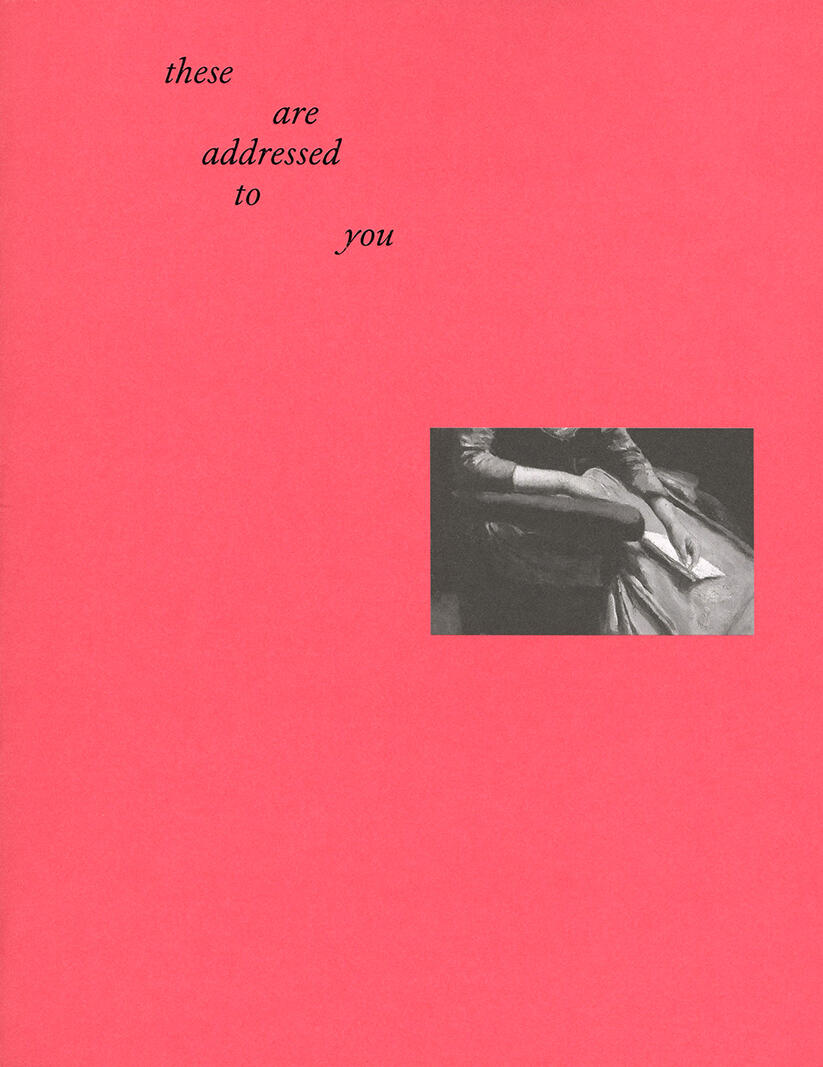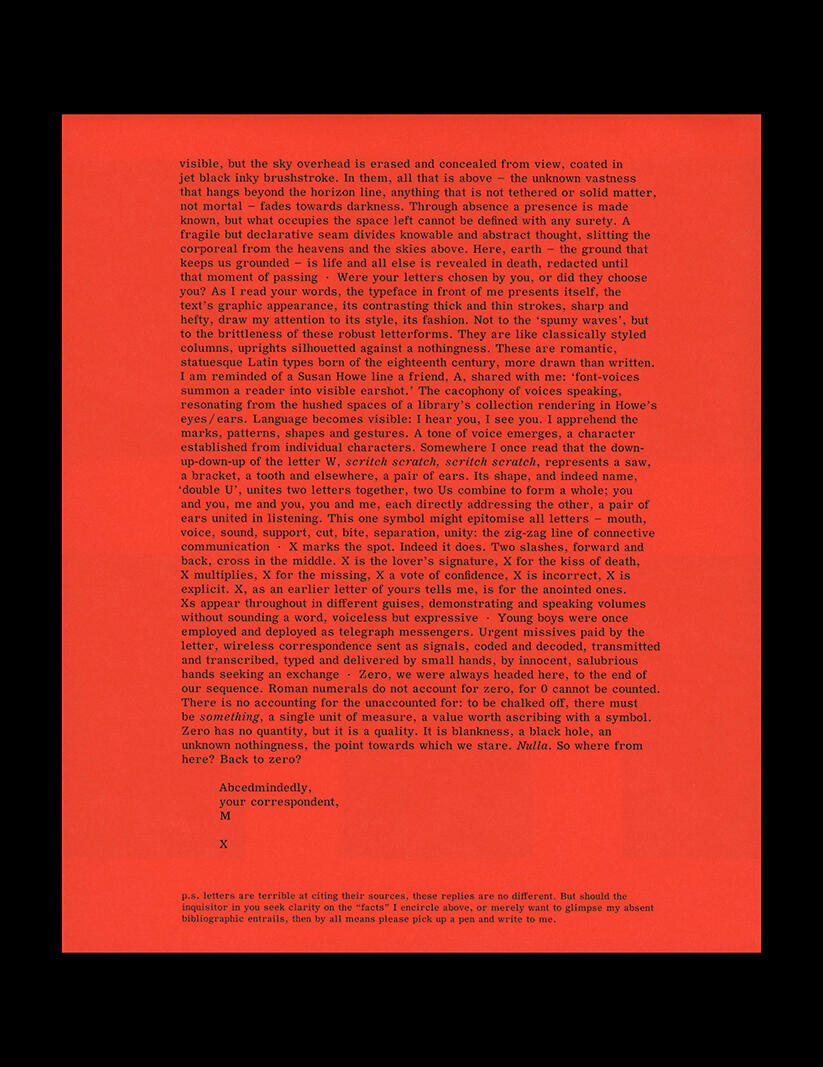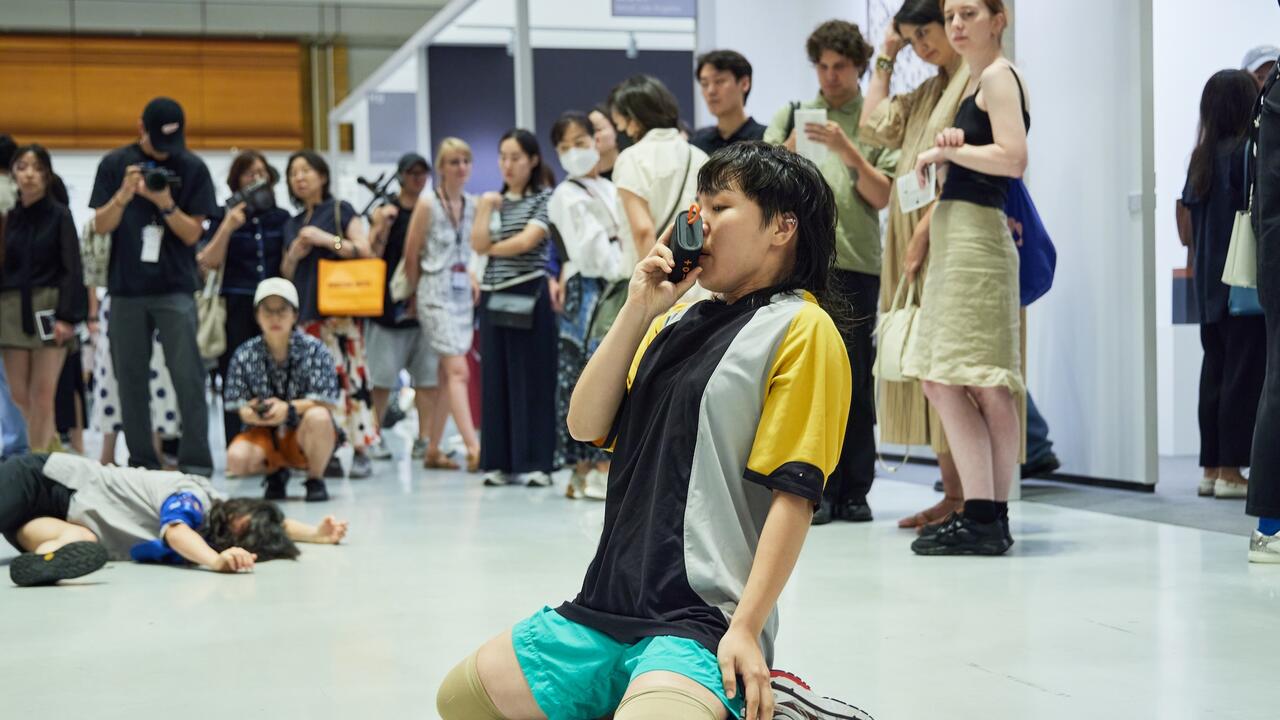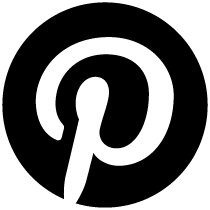For Sharon Kivland, Writing Is an Act of Connection
In These are Addressed to You, the writer and artist reflects on the meaning of letters, correspondence and the epistolic form
In These are Addressed to You, the writer and artist reflects on the meaning of letters, correspondence and the epistolic form

Trying to coax her cat down from a high shelf, the writer and artist Sharon Kivland is knocked on the head by a set of children’s alphabet blocks sent flying through the air. The letter S – ‘S for Subject, S for Signifier, S for sadness, S for me’ – hits her directly in the eye. Letters, duplicitous yet hard-edged and irreducible, are the subject of These are Addressed to You (2025), a fragmentary reflection on the base materials of language. Elegant, erudite and evasive, the publication traces the ways letters enter our lives in childhood as alien, inscrutable objects and end up as embodied extensions of ourselves.
Kivland’s definition of the letter encompasses the alphabetic and the epistolic, both of which have appeared consistently throughout her published work. For Kivland, letters are key to the history of psychoanalysis in the 20th century and the people who populate its case studies and waiting rooms. Her pamphlet series Freud on Holiday (2006–13) ransacked the psychoanalyst’s correspondence for minor details, collecting his remarks on the quality of weather, food and hotels on his travels abroad. Envois, forthcoming with Tenement Press later this year, reimagines Lacan’s seminars as if they were private love letters. Her 2022 book Abécédaire, published by MOIST, drew on the format of alphabet primers to make associative links between the disparate biographies of women whose names started with the letter A, their surnames reduced to an elusive initial: Anna O., Anna F., Annie D., Annie E.

Abécédaire’s compressed, page-long sections – composed over the course of an analytic hour – provide the format for These are Addressed to You, which consists of 26 digressive paragraphs written daily as letters to Brick from the Kiln’s editors Matthew Stuart and Andrew Walsh-Lister. The letters, like all the most pleasurable examples of personal correspondence, are provisional and improvisatory, following associative chains with a speculative air. They position writing as primarily an act of connection, a reaching out beyond our immediate horizons. The case of a psychiatric patient who wrote endless streams of letters to her love object is recounted in touching detail: ‘as soon as she would finish writing one letter, she would start another. […] The writing flowing from her pen, she said linked her to [him].’ Kivland twists this endless outpouring of language into a Lacanian maxim: ‘If one cannot speak about love, one can write it, trying to give to another what one does not have,’ reams of paper standing in for an unbearable lack. This absence at the heart of letter writing is not always presented in such melancholic terms. Kivland quotes from the end of a letter Denis Diderot wrote to his occasional lover Madeleine de Puisieux: ‘I have been talking to you for two hours, without being tired and without telling you anything.’ The pleasure of the text is enough.
Scattered throughout the publication, and collected on a fold-out insert, are images of 26 works selected from Kivland’s series of vintage seascape postcards Mes horizons (2013–ongoing). Mostly depicting stretches of jagged, rocky coastline but occasionally featuring lighthouses and graveyards, the postcards are modified with layers of Indian ink that completely block out the sky. These oppressive horizons suggest a claustrophobic interiority, countering their purpose as a souvenir to send to those back home. Even in these reproductions, it is possible to see where the heavily applied ink has cracked on drying or seeped over onto the postcards’ decorative borders.

The most effective passages of These are Addressed to You deal directly with the messiness of writing, its spillages and material excesses. Kivland draws attention to an ink-stained passage in one of Freud’s letters to Martha Bernays, his then-fiancée: ‘Here the pen fell out of my hand and inscribed these secret signs. I beg your forgiveness and ask that you do not trouble yourself with an interpretation.’ The tone is almost defensive, as if he’s only just realized the boundless potential of his own science. Almost in direct contrast, Kivland later refers to the notoriously erotic correspondence of James Joyce and Nora Barnacle. One explicit letter by Joyce revealed ‘no ink blots, no erasures, no grammatical, or syntactical mistakes,’ which led Brenda Maddox, Nora’s biographer, to comment that ‘there was no sign of his masturbation in or on the letter […] though he did remark he had to go change his trousers.’ Script written by hand is simultaneously presented as the interpretive key to undisclosed psychic impulses and the orderly surface that contains or restricts desire.
These are Addressed to You searches for a kind of writing attuned to the rhythms of the body; a relationship with language that makes space for absence and inference while never shying away from excess. Part of a recent flurry of publications, including the forthcoming Envois and its companion volume, Her Discourse (2025), published by Joan this summer, These are Addressed to You expands Kivland’s rich network of interlinked texts and further plumbs the depths of questions that have troubled her for decades.
Sharon Kivland's These are Addressed to You is published by Bricks from the Kiln
Main image: Sharon Kivland, These are Addressed to You, 2025. Courtesy: Bricks from the Kiln























